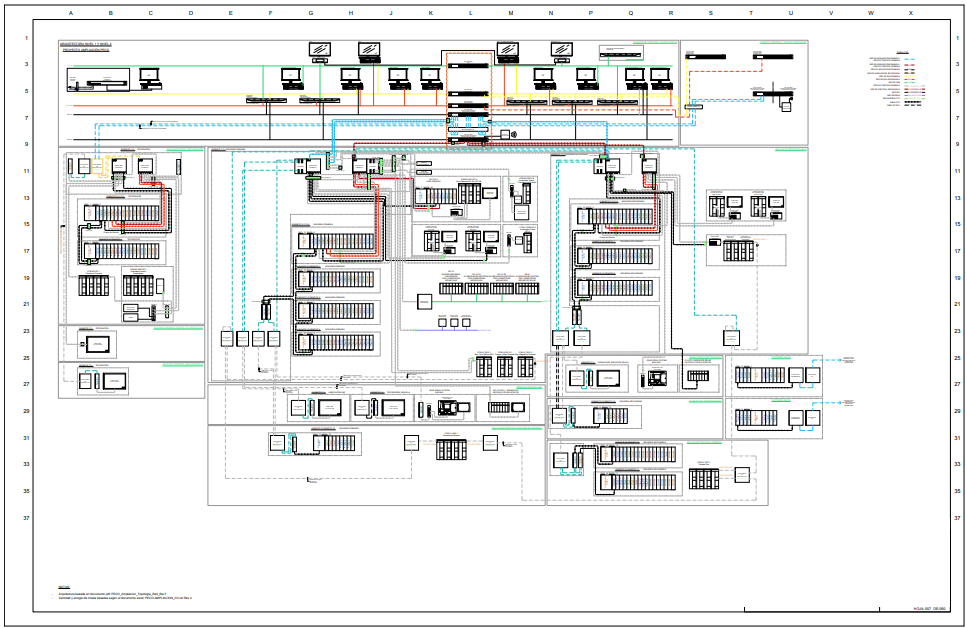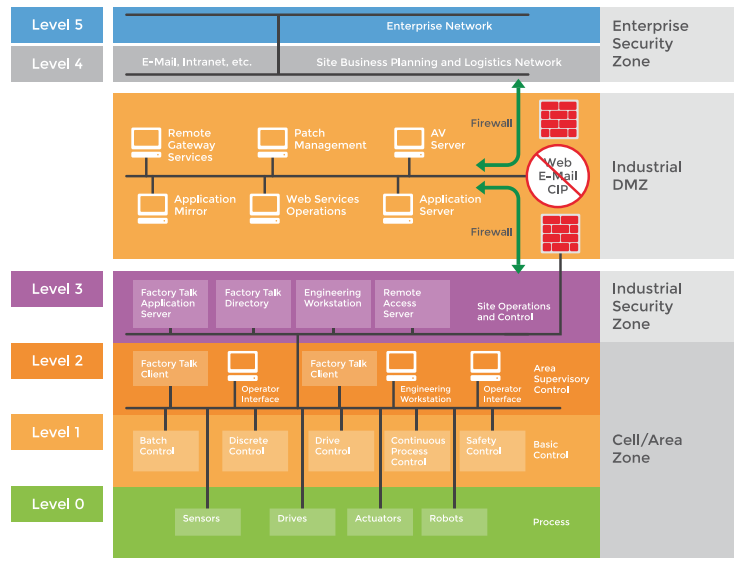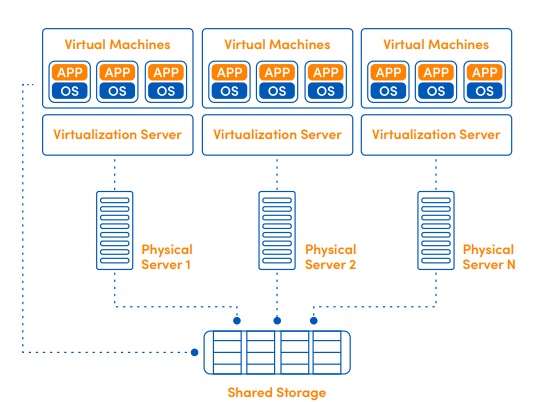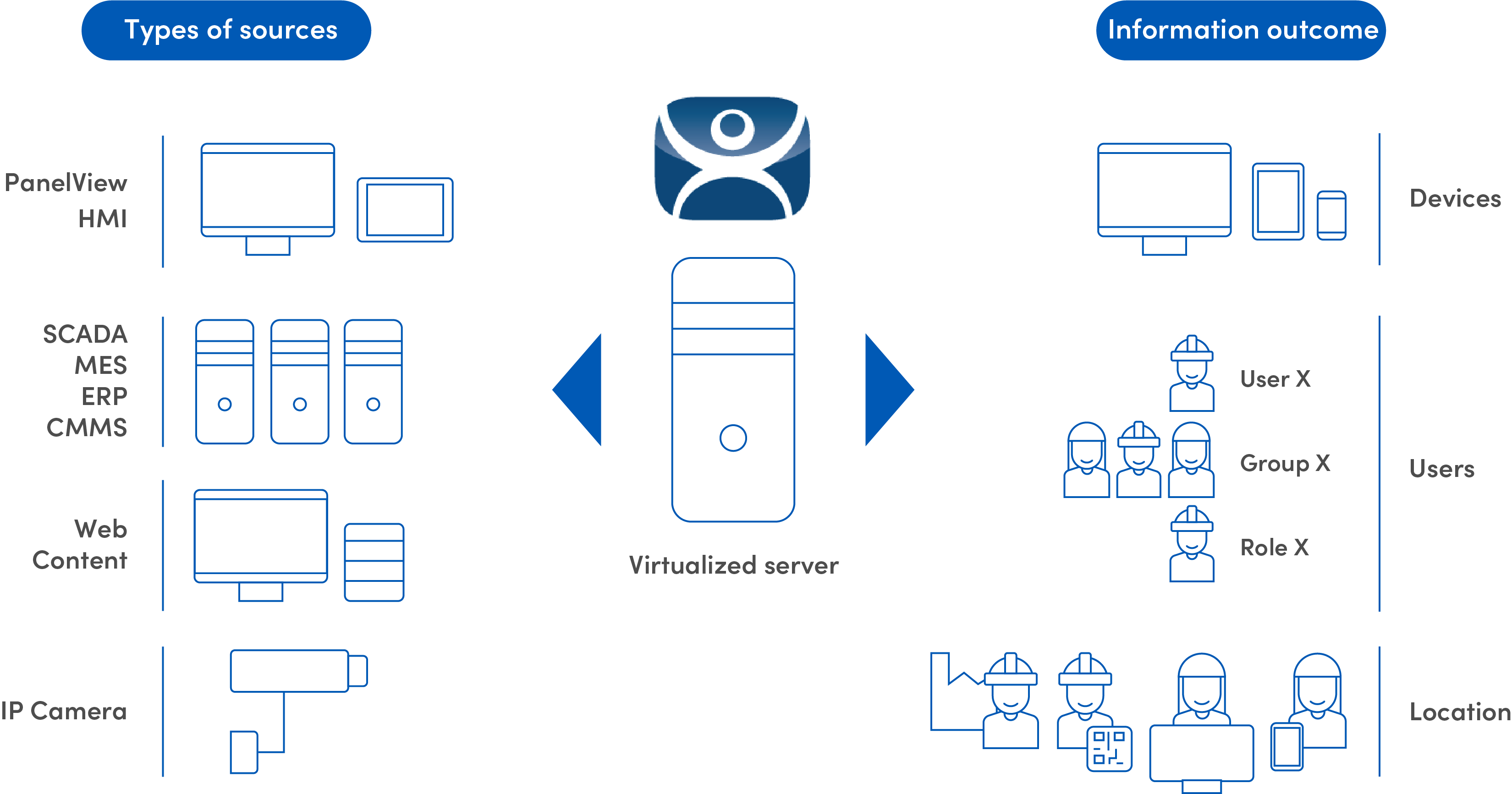 PRODUCTOS SOLUCIONES DE INDUSTRIA 4.0
PRODUCTOS SOLUCIONES DE INDUSTRIA 4.0
Industria conectada.
La infraestructura de las redes de comunicación en planta es la puerta hacia la transformación digital. Estas redes de comunicación permiten la conectividad entre diferentes dispositivos y sistemas en planta haciendo posible concentrar los datos para su uso en sistemas de información a nivel proceso, planta o empresa.
Infraestructura ethernet industrial
Uno de los estándares de comunicación que mas se utiliza actualmente es ethernet. Con la industria 4.0 se busca tener la mayor cantidad de equipos conectados por tal motivo se debe contar con una infraestructura de red robusta, resiliente y segura. El diseño de arquitecturas de red que desarrollamos en ECN Automation se basa en lineamientos plasmados en documentación desarrollada específicamente para arquitecturas ethernet convergente.
Esto ha llevado a ECN Automation a ejecutar proyectos desde el diseño de toda la arquitectura de planta hasta la administración completa de toda la red.
Cableado estructurado
Definimos cableado estructurado como un sistema de dispositivos, cables, canalizaciones que comunican a los usuarios con el sistema de control/información.
Cuando hablamos de un proyecto que requiera infraestructura de red lleva consigo el diseñar la arquitectura a nivel piso, controladores y cuarto de control. Es necesario cumplir con el estándar de la IEEE 802.3 para redes LAN que especifican la implementación de la capa física (cableado) y las normas de la ANSI/EIA/TIA-568A y ANSI/EIA/TIA-568B que definen los tipos de conexión que se pueden utilizar al ensamblar el cable de par trenzado (UTP) con el conector RJ-45.
Consideramos 3 puntos primordiales:
Cableado horizontal
Este es el encargado de llevar la información desde el distribuidor de piso hasta los usuarios.
Cableado vertical
El cableado vertical, también conocido como backbone o cableado troncal, es el encargado de crear interconexiones entre los cuartos de equipo, cuartos de entrada de servicios y cuartos de telecomunicaciones.
Cuarto de Control
Área destinada para el alojamiento de dispositivos del sistema de comunicación (gabinetes, servidores, switches, cables).
Arquitectura de red
En ECN Automation la creación de arquitecturas de red para ambientes industriales (OT), se realizan siguiendo las pautas de diseño e implementación para el desarrollo de arquitecturas Ethernet convergentes en Planta (CPwE). Siguiendo estas pautas aseguramos que nuestra arquitectura de red industrial sea escalable, sólida y segura.
Ejemplo de diagrama de arquitectura de control

En la imagen podemos apreciar una arquitectura de red que representa además de una visión gráfica general:
Arquitectura de red de control basada en ethernet industrial
El diseño de la arquitectura de red, se basa en 5 niveles, donde el nivel 0 contiene todos los dispositivos en campo como son sensores, robots o equipos de instrumentación. En el nivel 1 ubicaremos los dispositivos de control y en el nivel 2 los equipos necesarios para supervisar o visualizar los niveles inferiores.
El tercer nivel hace referencia a todas las actividades que se centran en el cuarto de control principal, aquí podremos encontrar las estaciones de operación (HMI) y el centro de datos industrial (IDC).
Los niveles 4 y 5 son parte de la red empresarial (TI). Una ventaja de este tipo de arquitecturas por niveles, es que podemos lograr una convergencia segura con la red empresarial, gracias a una red independiente que no se muestra pero que se conoce como zona desmilitarizada (Industrial DMZ - Nivel 3.5).
Niveles

Características de redes ethernet industrial
Dividida por niveles y zonas
Fácil de administrar
Rápida detección de fallas
Rápida integración de nuevos nodos
Beneficios de ethernet industrial
Económica
Implementación rápida
Compatibilidad
Simplicidad



Industrial data centers (IDC)/Virtualización
El centro de datos de su organización, será el punto central de su infraestructura en el que todos sus equipos, sistemas y aplicaciones convergerán. Por tal motivo, es de gran importancia contar con los equipos que garanticen el completo y correcto funcionamiento de los sistemas de su planta.
Ya sea de una manera tradicional o utilizando la virtualización de servidores, ECN Automation brinda a usted la experiencia obtenida a lo largo de los años ejecutando distintos proyectos nos permite ofrecer a usted seguridad en la operación de su lugar de trabajo.
Sistemas virtualizados
De un gran paso en el camino hacia la nube con la virtualización de su sistemas.
Definimos virtualización como el proceso de crear una representación basada en software o virtual en lugar de una física. La virtualización le permite poder ejecutar simultáneamente sobre un mismo servidor diferentes maquinas virtuales cada una trabajando de manera aislada de las demás. Logre una independencia del hardware, reduzca costos en infraestructura y consumo eléctrico.
Beneficios

Hipercovergente
La Infraestructura Hiperconvergente (HCI) es un sistema unificado y definido por software que reúne todos los elementos de un centro de datos tradicional como almacenamiento, recursos informáticos, red y administración.
Esta solución integrada utiliza software y servidores x86 para sustituir el hardware diseñado con fines específicos. Gracias a HCI es posible reducir la complejidad del centro de datos y aumentar la escalabilidad.
¿Cómo funciona la infraestructura hiperconvergente?
Una plataforma hiperconvergente consta de cuatro componentes de software estrechamente integrados:
El software de virtualización desvincula y agrupa los recursos subyacentes y, después, los asigna dinámicamente a aplicaciones que se ejecutan en máquinas virtuales o contenedores. La configuración basada en políticas adaptadas a las aplicaciones elimina la necesidad de utilizar estructuras complejas, como LUN y volúmenes de almacenamiento.





Movilidad
La dinámica actual de las operaciones requiere tener acceso a la información en cualquier lugar de manera inmediata. La capacidad de las redes de comunicación y la ciberseguridad nos brinda la plataforma confiable para lograrlo.
Aplicando la movilidad podemos acceder a la información de servidores de datos, dispositivos conectados, CCTV y otras fuentes de información en planta desde cualquier sitio fuera del cuarto de control, esto nos permite visualizar la operación, accesar reportes, alarmas o indicadores de proceso, mediante dispositivos móviles.
Para esto es necesario el contar con una red inalámbrica bien administrada que permita conectar dispositivos móviles con el sistema de control/información. Hablamos de dispositivos como puntos de acceso inalámbricos que serán los encargados de dar ese acceso a la red a los dispositivos móviles como celulares o tabletas electrónicas que interactúan con el sistema.
Para lograr esta interacción en ECN Automation en conjunto con Rockwell Automation hacemos uso de la solución ThinManager con la cual se ofrecen soluciones de software para redes de automatización que permiten la configuración y la implementación segura y centralizada de aplicaciones y contenido a cualquier PC, cliente delgado, dispositivo móvil o usuario.
Aumenta la seguridad y la protección mediante avanzadas funciones de visualización y autentificación que le permiten reducir el mantenimiento y el tiempo improductivo al simplificar la gestión de todos los dispositivos y usuarios.
Administración confiable de los clientes delgados y dispositivos móviles.
Arquitectura ThinManager

Beneficios


